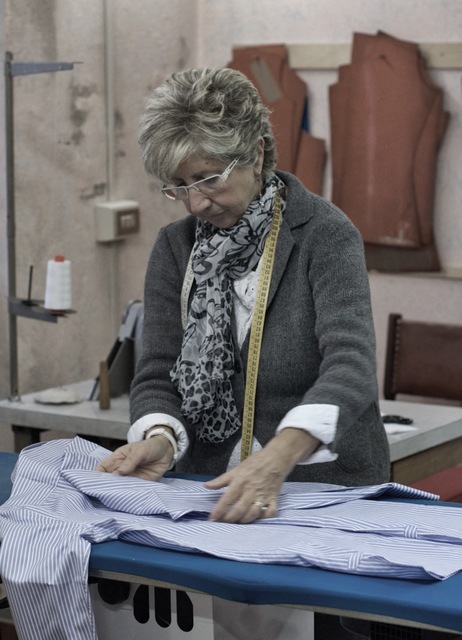Learn How to Measure Dress Shirts in 9 Simple Steps
Buying a dress shirt off the rack can be a gamble. Manufacturers create their sizing according to certain “average” measurements that may vary from brand to brand. In this guide, we will go over how to measure dress shirts, in detail.
The problem is, most of us don’t actually fall into those average size ranges. Getting the right dress shirt measurements is key.
Traditionally, you went to a tailor and he’d take all the measurements for you while you stood patiently waiting for him to finish. He’d measure around your neck, down your arms to determine the sleeve length, and around your chest and waist.
Along with those measurements, your tailor would add certain allowances for cut and fit according to what suits your personal style.
Through this process, you could guarantee yourself a perfect fit through trial and error. But what if there was a way to replicate the process without physically stepping into a shop? With so many online custom shirtmakers, now you can.
Comparing & deciding between dress shirt measuring techniques online.
With so many choosing to go online for custom offerings, how do you ensure a perfect fit? Allow us to explain the best method in getting your fit perfected.
When you order a dress shirt online, some manufacturers use an algorithm (such as Qsizing from Deo Veritas) to help get the right fit without actually taking measurements. Through a series of questions, the algorithmic system can hone in on the right dress shirt measurements to fit your body profile.
You can also take your own measurements with a measuring tape, but it’s tricky to do accurately on your own. Even with someone else doing the measurements for you at home, there can be mistakes that can affect the fit of your shirt.
Rather than have an amateur measure you, the next best thing is to find a professional who understands the process and can provide you with accurate measurements. But there is an even better method; measuring an existing shirt.
Finding that “perfect” dress shirt to measure from.
Like most men, you’ve probably got at least one or two shirts in your closet that fit perfectly. And a whole bunch that don’t. There are many variables to take into account, and getting a proper fit involves a number of different measurements.
You want a shirt that gives you a slim profile, with just enough room that it doesn’t pull at the buttons when you move, or keep sliding out of your waistband over the course of a day.
Every once in a while, you may luck into a great fitting shirt off the rack, only to find out that it’s been discontinued, or you can never find the brand name or right size ever again.
Replicating your perfectly fitting shirt.
If you have a favorite shirt that fits just right, you can actually duplicate that fit by using the same measurements. This drastically reduces the number of iterations needed to get that perfect fit, as you’ll effectively be trying to clone this shirt.
How to measure dress shirts.
Measuring your shirt is actually quite simple, as you have the exact reference points to measure from. Just follow the 9 steps below, and you’ll get accurate measurements that can be provided to any online custom shirtmaker.
Before you begin, remember to make sure that any part of the shirt you measure is laying flat on a table or other hard surface, so that you’re getting as accurate a measurement as possible.
Don’t add any extra allowances for shrinkage as most manufacturers take that into account already.
1. First, measure the full length collar from one side to the other, or button to buttonhole.
2. Then button the shirt and lay it on its back. Measure across the shirt body from one underarm to the other.
3. Now, find the narrowest part of the torso at the waistline, and measure that all the way across.
4. Take the measurement across the bottom of the side seams from one side to the other.
5. For the sleeves, you’ll need the length, measuring from the top of the shoulder straight down to the bottom of the cuff.
6. You’ll also need the width of the sleeve, which you can get by measuring across the widest part at the armhole.
7. For the cuffs, you’ll get the length by measuring the distance from the outer edge of the button hole on one side to the center of the button on the other.
8. Flipping the shirt so that the buttons are on the bottom, measure across the shoulders from one armhole seam to the other.
9. Last, you’ll get the overall length by measuring the back from where the collar joins to the shirt down to the very bottom of the hemline.
Getting a perfect fit from your existing dress shirt.
Using the measurements of your own perfect dress shirt, a custom shirt maker can easily duplicate the results. And once the tinkering is complete, you’ll land yourself a perfected cloning process, resulting in the best dress shirts you’ve ever bought (and owned).


